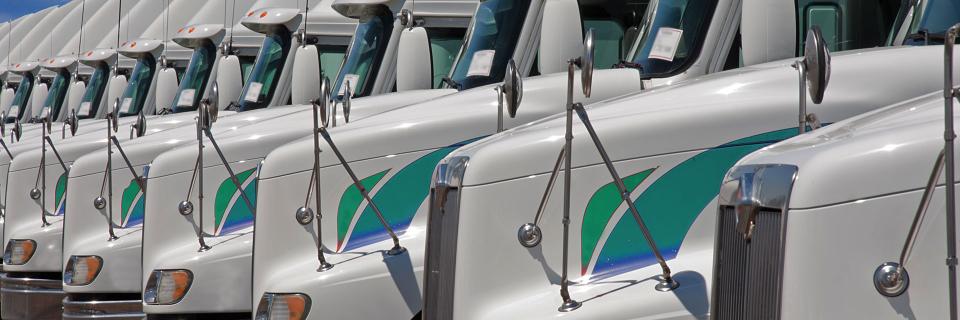
Much has been written in recent years about the challenges faced by truck drivers in the United States today. Driving an over-the-road truck can be lonely and isolating. Wages for many truckers have stagnated. There’s a growing number of government rules regulating what drivers can and can’t do on the job.
Truck driving is tough work. It also remains a very important job. An overwhelming number of statistics show that trucking may be the leading indicator of the country’s economic health. If trucks are moving more freight, that means Americans are more productive and earning more money.
Below are seven reasons—backed by recent stats—explaining why trucking is America’s number one job today.
Truckers are Everywhere
Despite a much-publicized shortage of qualified drivers, truck driving remains one of the fastest-growing occupations in the United States. According to the U.S. Bureau of Labor Statistics on how many people have jobs as drivers, there are more than 2 million heavy-duty and tractor-trailer truck driving jobs today. Overall, a total of 8.5 million Americans have jobs tied to the trucking industry.
Trucks Move Everything
Rail and intermodal transportation have been growing in recent years. However, commercial trucks still move the lion’s share of goods and materials. These statistics from the 2024 Trends report by the American Trucking Associations (ATA) illustrate the industry’s dominance
Trucking Statistics for 2024
Total Class 8 Trucks | 3.6 million |
Total Revenue | $987 billion |
Freight Moved | 11.8 billion tons |
Percentage of All Freight | 72.7% |
Percentage of All Freight Sales | 76.9% |
State and Federal Highway Taxes | $42.4 billion |
The Industry Continues to Grow
Over time, trucking’s percentage of the overall freight market is projected to hold steady. However, industry groups project overall growth for the industry as a whole. Below are projections for the next 10 years from the ATA.
Freight Growth Projections: 2024 to 2035
Truck Tonnage | 24.2% growth |
Intermodal Rail Tonnage | 2.9% growth |
Freight Revenue | 61.2% growth |
Driving Isn’t Automated
At a time when many American blue-collar jobs have been in decline, the number of truck driving jobs has grown. That's because trucking has been immune to two of the biggest forces affecting the U.S. workforce today—automation and offshoring.
Driving a truck over the Interstate cannot be outsourced to India or China. Likewise, robots have not learned how to drive and park a rig. That latter fact may not always remain true, as truck manufacturers are attempting to develop trucks with self-driving technologies.
Trucking Drives the Economy (and Vice-Versa)
Many economists look to trucking as a key bell weather of the United States’ overall economic health. When more trucks are moving and freight rates are rising, that means consumers are spending more, and retailers and manufacturers are adding to their inventories. It’s no coincidence that, at a time when the overall employment rate is high and consumer confidence is rising, the trucking industry is also seeing growth in shipping demand.
Trucking is Small Business
Is the American dream dead? Not with trucking, apparently. Owning and operating a single truck or a small fleet remains the most frequent route to business ownership. In fact, trucking is an industry made up of small businesses, with 87% of motor carriers operating six or fewer trucks. Over 97% of trucking companies today have fewer than 20 power units.
According to the Federal Motor Carrier Safety Administration (FMCSA) there were over 577,000 trucking companies operating in the United States as of March2024. That number may rise or fall from year to year, but the fact remains: many of America's small business owners are truckers.
Trucking Remains a Solid Career Path
When compared with U.S. household median income, driving a truck remains a good way to make a living. According to the ATA, for-hire drivers earn an average annual income of over $76,000, while private fleet drivers could make significantly more, 80,000on average. Median income for all U.S. households was $80,610 in 2023, according to U.S. Census numbers.
Trucking remains a solid, middle-class living, but there is concern about the industry’s wage growth, ability to recruit younger workers and more. According to the NTI, driver compensation has risen over the past five years, but perhaps not as much as it should With the cost of living for U.S. families increasing every day, it’s important for those in the trucking industry to be strategic about their spending.
If you’re a trucker and are interested in fuel card discounts or funding solutions, talk to one of our dedicated representatives today. RTS has been serving the transportation and logistics industries for over 35 years.